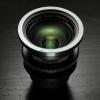Search the Community
Showing results for tags 'shining'.
-
According to the article "The Steadicam and "The Shining" (American Cinematographer - August 1980) Garett Brows says : "To annoy him we would indicate the forest of TV antennas aimed at the studio from suburban Borehamwood and imply that the TV signal was escaping the sound stage and being watched by a gaggle of “Monty Python” women every morning: “Ooooh, poor Mr Brown!… That take seemed perfectly good to me!” Somewhat later, our imitation ladies got even more sophisticated: “Ooh, must be the 24mm Distagon!, see how it’s vignetting in the viewfinder!” I was thinkking if that "24mm Distagon" is a Zeiss Standard Speed 2.1 (in The Shining kubrick used Super Speeds 1.4) OR the Canon 24mm ASPHERICAL 1.4 he used in Barry Lyndon ... As i know .. 24mm Zeiss distagon doesn't vignetting !!! but a Still converted to Cine lens ??? -Probably Brows called "distagon" the canon not becouse it's is "official" name but becouse of his curvness -Also the 1.4 speed of Canon would be a great advance in this low ASA 80's What do you think ?? Thanks
-
Hello .. Can anyone identify what zoom lenses are ?? I'm pretty sure the one from 'The Shining' it's Cooke Varotal 20-100mm T3 But what about the other's ?? Thanks again !!
- 11 replies
-
- Kubrick
- zoom lenses
-
(and 4 more)
Tagged with:
-
Dear Forum, Stanley Kubrick is a director whom I have admired for as long as I can recall. His innovations to filmmaking are innumerable and in his wake has inspired several contingents of new filmmakers to push the limits in terms of conventions. Anyway, it was yesterday when I rewatched The Shining that a particular question came to my mind - his lighting techniques. I know that Kubricks use of practical lighting was quite groundbreaking, but how much did he actually rely on them to light the entire set (excluding the use of large daylight fixtures for interior day scenes)? Kubrick enjoyed immense creative freedom on his productions and was thus able to reconstruct the entire interior (and parts of the exterior, I believe) of The Overlook Hotel on a soundstage. Please take a look at the still attached. As you can see there are numerous practicals visible, and they are all blown out. Is it reasonable to suggest that all bulbs are a minimum of 1kW? Since the fastest available film stock until 1981 was only 100 ASA, would these practicals have been enough to light the entire scene? And what about the reflection on the floor in the bottom left of the frame? Many thanks in advance!!



